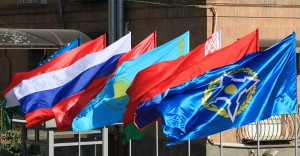“An effort is underway on creating a crisis response center of the CSTO on the basis of Russia’s Defense Ministry,” the source said
The plans on setting up the center were announced at the December 2014 session of the organization’s decision-making body, the Collective Security Council, the source added.
The member-states have also stepped up efforts on agreeing the collective security strategy for up to 2025 which envisages a range of meetings and consultations of experts, he said.
A spokesman for the Russia-led military alliance of former Soviet states said in late June the crisis response center will help member-states to deal with major security threats.
He said that the new center would be based at an information technology complex for software and hardware development, which is currently being equipped in one of the Russian Defense Ministry’s military towns near Moscow.
The Collective Security Treaty Organization is an intergovernmental military alliance, acting as counterpart to the NATO alliance, which was signed on 15 May 1992. In 1992, six post-Soviet states belonging to the Commonwealth of Independent States—Russia, Armenia, Kazakhstan, Kyrgyzstan, Tajikistan, and Uzbekistan—signed the Collective Security Treaty (also referred to as the “Tashkent Pact” or “Tashkent Treaty”).
Three other post-Soviet states—Azerbaijan, Belarus, and Georgia—signed the next year and the treaty took effect in 1994. Five years later, six of the nine—all but Azerbaijan, Georgia, and Uzbekistan—agreed to renew the treaty for five more years, and in 2002 those six agreed to create the Collective Security Treaty Organization as a military alliance. Uzbekistan rejoined the CSTO in 2006 but withdrew in 2012.



